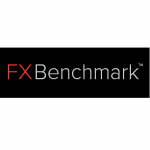
Transactional cost analysis (TCA) is a major part of buy side firms to ensure their execution prices are up to par with the market. However, sourcing market data and conducting reporting is often a pricey and tech-heavy endeavor. Today, FX Liquidity management and technology firm, Integral Development, has announced the upcoming launch of Integral FX Benchmark to cater to the rising demand of TCA tools. Expected to go live in January 15th, 2014, Integral FX Benchmark will provide free second-by-second mid-price reports that will be available for download on a daily basis. In its launch, the firm plans to initially offer coverage in the following currencies; AUD/USD, EUR/USD, GBP/USD, NZD/USD, USD/CAD, USD/CHF and USD/JPY.
According to Integral, the firm has collaborated with Stanford University in the development of the methodology to calculate the second-by-second benchmark rates. Commenting about their participation in the product’s press release, Kay Giesecke, Associate Professor of Management Science and Engineering at Stanford University said, “The Integral FX Benchmark is a perfect example of how Stanford collaborates with the industry to conduct research that helps revolutionize the use of Big Data for the benefit of market participants. Access to accurate information is a key component of market efficiency that drives growth and innovation.”
In terms of the need for proper benchmark rates, also commenting in the release was Michael Melvin, Managing Director and Senior Research Advisor at BlackRock, who stated, “Even if one had a historical data set to allow model estimation, the challenge has been to have a proper continuous exchange rate series that supports trade evaluation on an ongoing basis.”
Big Data
Within the corporate world, ‘big data’ has become both an important trend and catchphrase. Used to term the ability to create efficient business decisions based on the reviewing of data, it has become increasingly more part of modern society thanks to improvements in technology that allow for lower costs to record and monitor information. As a result, firms have greater abilities to review which factors are most important for their businesses.
In terms of FX, TCA is used by buy side firms to calculate their execution prices versus those in the rest of the market. Wide variation from market rates can imply that orders are vulnerable to excessive Slippage or affected by latency. As such, having access to comparable rates provides traders the ability to negotiate with their liquidity partners to determine why they are being filled at given rates.
However, just having access to data isn’t always enough. One of the biggest knocks against big data is overkill. While too little information is always problematic, having too much can lead to difficulties in implementing changes and understanding what are the key data points. When reviewing FX execution, deviation from market rates is also a result of the order size of a trade and time of day. As such, in addition to just comparing benchmark rates, data filtering needs to be accomplished to understand which sample size of orders are best for analysis.











